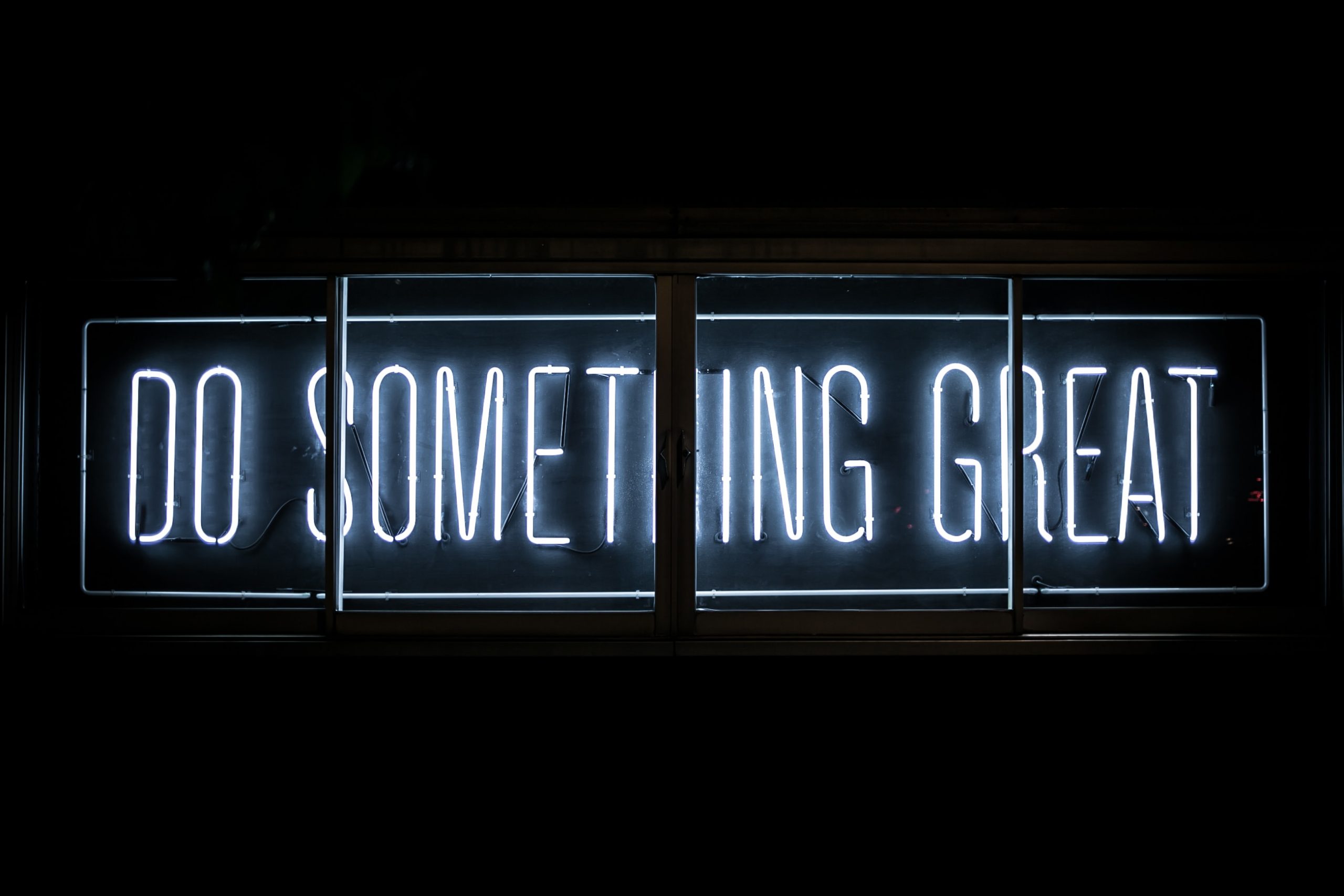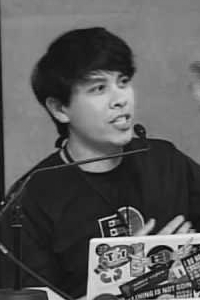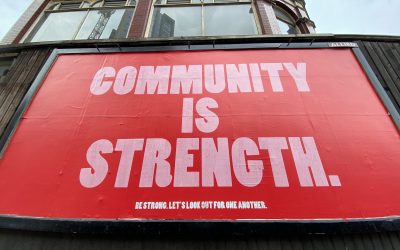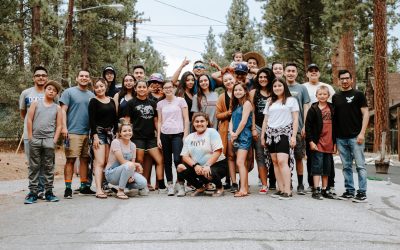
A few months ago the second edition of my book [The Art of Community](https://www.artofcommunityonline.org/) was released. You can [buy the book in print or for your e-reader/tablet, or you download the Creative Commons licensed PDF](https://www.artofcommunityonline.org/get/). If you download the free PDF all I ask is that you put a review up somewhere online to help spread the word about the book. If you are reviewer for a website/magazine and want to review the book, please get in touch with me and we can coordinate a review copy.
For those of you who have not released a book yet, it is a *bowel-shakingly* nerve-wracking experience. You invest months of your spare time into writing it, and you really want people to enjoy it. This nervousness is particularly amplified in the case for a book that you write about your profession, such as *The Art of Community* was for me.
Little did I realize that writing a second edition would be *even more nerve-wracking*. You see, the first edition of the book did pretty well; it had four-and-a-half star ratings on Amazon and performed favorably in the reviews. While naturally thrilled with the response, a big chunk of me concluded that this positive response was simply down to dumb luck.
Then, when I started writing the second edition, my worries ballooned. I was now concerned that my rookie-luck with the first edition could be washed away with a poorly written and released follow-up edition, thus tarnishing the reputation of something I was already proud of. Now, this might sound a bit silly to some of you, but this was actually keeping me awake at night throughout the writing process. When I finally clicked *send* to submit the final manuscript to O’Reilly I was a combination of relieved that it was complete, but also nervous that my writing was now cast in stone, ready for the feedback cycle to begin.
So, with a nervous gulp, the second edition was released. I didn’t want to jump to conclusions with the first few reviews; it takes time to take the pulse of opinion in your readers, so I left it for a few months to see how it did.
It has now been those few months since it’s release and fortunately it seems the second edition is doing great too. If [the Amazon.com page](https://www.amazon.com/The-Art-Community-Building-Participation/dp/1449312063/ref=dp_ob_title_bk) is anything to go by (and I think it is generally could summary of feedback), it has received positive reviews and maintains a four-and-a-half star rating with 43 reviews.
In reading the page, it seems Amazon pulls out summary quotes from its range of reviews and the summaries (which can be a combination of good and bad quotes). It starts with this one:
> Referencing his experiences as community manager of Ubuntu, Jono Bacon provides best practices.
…then this:
> The stories laced throughout the book show practical applications of the material and make it a thoroughly enjoyable read.
…and then this:
> In other words, this is one of the best books I have had the pleasure of owning in some time, and has earned a permanent spot on the book shelf.
I will take ’em! I was pretty surprised and flattered to see these summaries. Thank-you to everyone who has purchased and reviewed the book. If you enjoyed the book and haven’t reviewed it yet, please do post your review either on your blog or wherever you purchased it.
## About The Book
If you are unfamiliar with what is in the second edition of *The Art of Community*, here is a rundown of the content, coverage, and interviews. Remember, you can [buy the book in print or for your e-reader/tablet, or you download the Creative Commons licensed PDF](https://www.artofcommunityonline.org/get/). If you download the free PDF all I ask is that you put a review up somewhere online to help spread the word about the book.
- The Art of Community
- Planning Your Community
- Communicating Clearly
- Processes: Simple Is Sustainable
- Supporting Workflow with Tools and Data
- Social Media New!
- Building Buzz
- Measuring Community
- Managing and Tracking Work New!
- Governance
- Handling Conflict and Relationships
- Creating and Running Events Expanded!
- Hiring a Community Manager
- Community Case Book New!
- Onward and Upward New!
### Foreword

|
|
Chris Anderson, editor-in-chief at Wired magazine, and author of the New York Best-selling The Long Tail. |
Also includes the foreword from the first edition with **Leo Laporte**, founder of the **TWiT Network**.
### Chapter 1: The Art Of Community
I begin the book with a bird’s-eye view of how communities function at a social science level. We cover the underlying nuts and bolts of how people form communities, what keeps them involved, and the basis and opportunities behind these interactions.
##### Coverage Includes:
* Collaboration-Driven Ethos
* The Essence of Community
* Building Belonging into the Social Economy
* The Basis of Communication
* Unwrapping Opportunity
* A Community Manager: Becoming the Community
* Cracking Open the Personality
* Trust Is Everything
* The Value of Listening
* Avoid Ego, or Others Will Avoid You
* Theory Versus Action: Action Wins
* Becoming Yourself
* Moving Forward
### Chapter 2: Planning Your Community
Next we carve out and document a blueprint and strategy for your community and its future growth. Part of this strategy includes the target objectives and goals and how the community can be structured to achieve them.
##### Coverage Includes:
* Planning for Success
* Community: The Bird’s-Eye View
* Teams: The Building Blocks of Belonging
* Finding Your Place
* Units of Belonging
* Read Versus Write
* Read-mostly communities
* Write-centered communities
* Meritocracy
* Working Together Is Success
* Diversity
* Designing Your Community
* Baking in Openness
* Building a Mission Statement
* Building a Strategic Plan
* Structuring the plan
* Filling Out the Plan
* Brainstorming Ideas
* Technique 1: Question assumptions
* Technique 2: Think outside the box
* Technique 3: Let’s make it suck
* Pulling Together the Threads
* Teams: Divide and Conquer
* Identify how we can divide our community into teams
* Define the scope of each team, and help team members understand that scope
* Understand the extent and range of collaboration among our teams
* Ensure that teams can communicate clearly and effectively
* Documenting Your Strategy
* Financially Supporting Your Community
* Revenue Opportunities
* Online advertising
* Selling
* Donations
* Sponsorship
* Wrapping Up
### Chapter 3: Communicating Clearly
At the heart of community is communication, and great communicators can have a tremendously positive impact. Here we lay down the communications backbone and the best practices associated with using it.
##### Coverage Includes:
* He Said, She Said
* Building Your Communication Channels
* Striving for Clarity
* Choices, Choices
* Communication fetishism
* The Mediums
* Mailing lists
* Discussion forums
* Social media
* IRC
* Leading by Example
* Daily Communication
* Netiquette
* Avoiding bikeshedding
* Longer Writing
* The mechanics of writing
* Don’t write like an institution
* Untwisting the tail
* Setting tone
* Inspiring your community
* Summary
### Chapter 4: Processes: Simple Is Sustainable
We now move on to focus on putting the facilities in place for your community to do great things. In this chapter we build simple, effective, and nonbureaucratic processes that enable your community to conduct tasks, work together, and share their successes.
##### Coverage Includes:
* Eyes on the Prize
* Keeping Things in Perspective
* The Impact of Processes
* Building Great Processes
* Breaking Up the Puzzle
* Building a process
* Process Considerations
* Simplicity is key
* Avoiding bureaucracy
* Transparency
* Assessing Needs
* Community Cycles
* Leading by example: Ubuntu
* The Gates of Your Community
* Reviewing new developers: In depth
* Assessing Contributors
* Managing Feedback
* Gathering feedback
* Getting Buy-In for Your Processes
* Document Them
* Make Them Easy to Find
* Using Your Processes
* The On-Ramp: Creating Collaborative Processes
* Identifying the On-Ramp
* Developing Knowledge
* Determining Contributions
* Growing Kudos
* Process Reassessment
* Building Regularity
* Moving On
### Chapter 5: Supporting Workflow With Tools and Data
We continue our discussion of community facilities to build workflows that are driven by accessible, sensible, and rock-solid tools that enable your contributors to do great work quickly and easily.
##### Coverage Includes:
* Understanding Your Workflow
* Roles
* Building a Simple Workflow
* The Mechanics of Collaboration
* An Example: Ubuntu Bug Workflow
* Getting to know the problem
* Breaking down the conversation
* Lessons learned
* Building Great Infrastructure
* Software As a Service
* Avoiding Resource Fetishism
* Technical Considerations
* Bug Tracking
* Bug reporting
* Bug triage
* Source Control
* Collaborative Editing
* Building and Maintaining Transparency
* Tool Access
* Communications
* Reporting
* Regular Workflow Assessment
* Gathering Structured Feedback
* Moving On
We now take a look at social networking, what it is, how it can help us, how to avoid the hype, and how to harness it in our communities.
##### Coverage Includes:
* Don’t Be That Guy/Girl
* Being Social
* Social Media Services in a Nutshell
* Twitter
* Facebook
* Google+
* Harnessing Social Media
* Broadcasting
* Getting more eyeballs
* Tuning up your messages
* Avoiding social media overkill
* Feedback
* Where to look
* Debates
* Asking for feedback
* Collaboration
* Communication
* Campaigns and awareness
* Events
* Social Media on Your Terms
* Controlling the Fire Hose
* Optimizing How You Post
* Being Socially Responsible
* Organizing a Community Event
* The buildup
* At the event
* Running a Campaign
* The preparation
* The buildup
* Providing Community Updates
With a solid foundation in place, we move on to build excitement and buzz around your community and encourage and enthuse every man and his dog to get involved and participate.
##### Coverage Includes:
* Mindshare
* The Mindshare Opportunity
* The Building Blocks of Buzz
* The Mission
* Uniting Together
* Inspired Words
* Becoming the Advocate
* Getting It Right by Not Getting It Wrong
* Honesty
* Setting Up Your Base
* Aims
* Staying Current
* Building Conversation
* Getting Online
* Syndication
* The Buzz Cycle
* Planning
* Buildup
* Announce
* Review
* Buzz Targets
* Announcing Your Community
* Attracting Contributors
* Building Alliances
* The Professional Press
* The Amateur Press
* Blogs
* Blog wars
* Podcasts
* Videos
* Events and Conferences
* Choosing Events
* Submitting your paper
* Promoting your talk
* Delivering Presentations
* Creating attractive slides
* Long versus short presentations
* Summary
### Chapter 8: Measuring Community
Although many consider community touchy-feely and unmeasurable, this chapter confronts the myth and guides you in tracking, monitoring, and otherwise measuring the work going on in the community so that it can be optimized and simplified.
##### Coverage Includes:
* Community Self-Reflection
* The Foundations of Feedback
* Defining Purpose
* Hooks ’n’ Data
* Statistics and Automated Data
* The risks of interpretation
* Plugging your stats into graphs
* Surveys and Structured Feedback
* Choosing questions
* Showing off your survey reports
* Observational Tests
* Measuring Mechanics
* Gathering General Perceptions
* Perception of you
* Anonymity and Privacy
* Anonymity
* Privacy
* Moving On
### Chapter 9: Managing and Tracking Work
Continuing on from measuring our community, we now explore methods by which you can ensure that your community projects and participants stay on track and deliver great results.
##### Coverage Includes:
* Credibility and the Need to Track Progress
* The Importance of Tracking Our Work
* Tracking the Right Things
* Within the Context of a Company
* Defining value
* Communicating up and down
* What We Need to Manage
* Tracking Projects
* Structuring Your Projects
* Managing Work Items
* Structuring work items
* Documenting work items
* Visualizing Data with Burndown Charts
* Using burndown charts
* Observing burndown patterns
* Generating additional information
* Building burndown charts into your workflow
* Tracking Growth and Decline
* Visibility Is Key
* Ensuring Effective Processes
* Tracking Health
* Promoting a Feedback Culture
* Building a Set of Generals
* Reacting to Community Concerns
* Moving On
Our next stop is the wide-ranging and seemingly complex topic of governance. We explore what options are available for a low-friction, capable, and representative governance strategy for your community.
##### Coverage Includes:
* Accountability
* Governance Does Not Suck
* Governance and Community
* The Case for Governance
* Follow the Leader
* Engage the People
* Aspire to Inspire
* To Bring Peace
* Learning from the Leaders
* Dictatorial Charismatic Leadership
* Enlightened Dictatorship
* Delegated Governance
* Setting Up a Community Council
* Designing a Council
* Responsibilities
* Structure
* Commercial sponsorship
* Membership
* Codifying Your Council
* Nominating and Electing Council Members
* Forming a new council
* Ubuntu Governance Example
* In the Beginning…
* The Structure of the Ubuntu Community
* Mark Shuttleworth
* Community Council
* Technical Board
* Team councils
* Membership
* Ubuntu Member
* Developer
* Council or Board Member
* Escalation
* Expanding Governance
* Knowing When It Is Time
* Building the Subcouncil
* Escalation
* Communicating Between Councils
* Summary
### Chapter 11: Handling Conflict and Relationships
One of the most sensitive topics in community leadership is handling conflict. In this chapter we explore how to identify, handle, and prevent irksome conflict; handle divisive personalities; and unblock problems.
##### Coverage Includes:
* The Nature of the Beast
* The Structure of Strife
* The Calm Before the Storm
* Contentious Personalities
* Profiling the polemical
* Sharing feedback about personality issues
* Poisonous people
* Barriers to Input
* Problems with Responsibility
* Lack of Justice
* The Conflict Resolution Process
* The Role of a Facilitator
* Be objective
* Be positive
* Be open
* Be clear
* Resolving the Conflict
* Part 1: Calm and reassure
* Part 2: Get the facts
* Part 3: Discuss
* Part 4: Document
* Part 5: Reflect and maintain
* Dealing with Burnout
* Detecting and Treating Burnout
* Required rest and relaxation
* Work/Life Balance
* Addiction
* Handling Absence
* Handling Bereavement
* Summary
### Chapter 12: Creating and Running Events
Events offer an excellent opportunity for your community to bond, be productive, and have fun, and this is where we cast our beady eye in this chapter.
##### Coverage Includes:
* Building Family Values
* Events
* Getting Organized
* Step 1: Identify Requirements
* Step 2: Find Help
* Step 3: Set Deadlines
* Step 4: Make Time
* Organizing Physical Events
* Common Attributes
* Location/venue
* Accommodation
* Equipment
* Date/time
* Cost
* Registering attendance
* Catering
* Insurance/unions
* Organizing a Sprint
* Organizing a Summit
* Structure and scheduling
* Inside a session
* Event-specific notes
* Organizing an Unconference
* Event-specific notes
* Getting Sponsorship
* Understanding Your Needs
* Finding and Handling Sponsors
* Setting expectations
* The pitch
* Handling the Money
* Case Study: The Ubuntu Developer Summit
* The Ethos of the UDS
* How It Works
* The Organizational Team
* Organizational cadence
* The Venue
* Meeting room requirements
* Location
* Facilities
* Assets
* Infrastructure
* Room Layout
* The Timetable
* Opening keynotes
* Plenaries
* Lightning talks
* Sessions
* Scheduling
* Organizing Online Events
* Common Attributes
* Mediums
* Online Discussion Meetings
* Choosing a time
* Advertising the meeting
* Setting the agenda
* Running the meeting
* Organizing Online Tutorials
* Scheduling
* Preparing for a session
* Running a session
* Summary
### Chapter 13: Hiring a Community Manager
We now explore some advice and guidance for organizations that want to hire a community manager to conduct and implement the wide range of topics that we have discussed throughout the book.
##### Coverage Includes:
* Why Community Building Has Become a Big Business
* The Role of a Community Manager in the Corporation
* Setting Expectations
* Scope of the Role
* Risk
* Breaking Tradition
* Control and Reporting
* The ability to enact change
* The Responsibilities of Community Engagement
* Salary
* Communicating Expectations to the Candidate
* Managing Your Community Manager
* Induction
* Internal reputation
* Community reputation
* Strategy
* Management and Communications
* Weekly engagements
* Community feedback
* Summary
### Chapter 14: Community Case Book
Next I present a fascinating collection of interviews from accomplished community builders about how they created their own inspirational communities to help round off your knowledge with the experiences of these leaders.
##### Includes Interviews With:
|
Linus Torvalds |
Mike Shinoda |
Tim O’Reilly |
Mårten Mickos |
|
James Spafford |
Dries Buytaert |
Mark Bussler |
Mike Linksvayer |
Mary Colvig |
Richard Esguerra |
Ilan Rabinovitch |
Carolyn Mellor |
### Chapter 15: Onward and Upward
Finally, we close The Art of Community with some additional resources and events to continue your journey.
##### Coverage Includes:
* Building Our Own Community
* Social Media
* Videos
* The Community Leadership Summit
* How It Works
* Joining Us
* Keeping in Touch




















